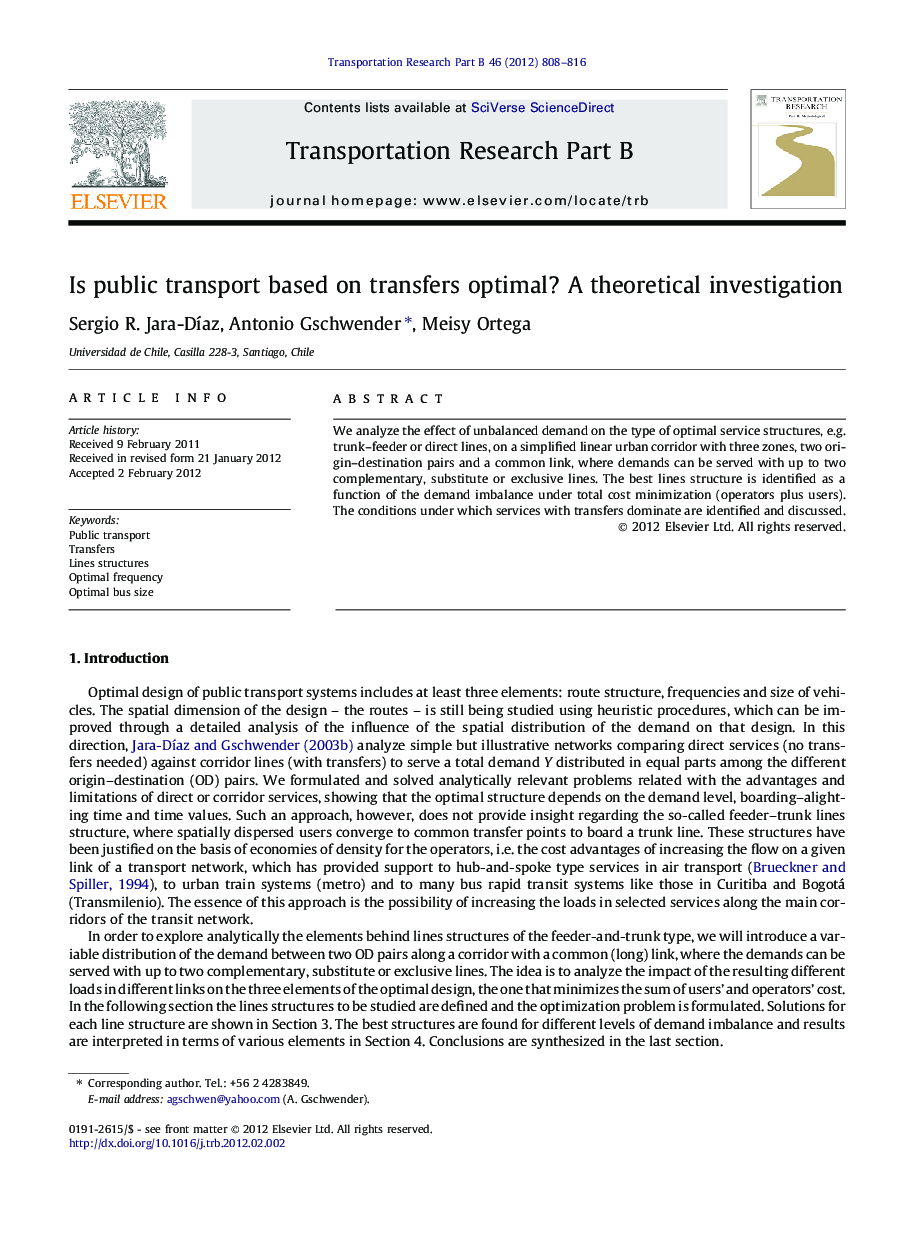| Article ID | Journal | Published Year | Pages | File Type |
|---|---|---|---|---|
| 1132444 | Transportation Research Part B: Methodological | 2012 | 9 Pages |
We analyze the effect of unbalanced demand on the type of optimal service structures, e.g. trunk–feeder or direct lines, on a simplified linear urban corridor with three zones, two origin–destination pairs and a common link, where demands can be served with up to two complementary, substitute or exclusive lines. The best lines structure is identified as a function of the demand imbalance under total cost minimization (operators plus users). The conditions under which services with transfers dominate are identified and discussed.
► We model a linear urban transit corridor with two O–D pairs and a common link. ► Optimal spatial structure of lines depends on relative demands and links lengths. ► A single line dominates when the flow over the entire corridor is relatively large. ► A feeder–trunk structure is better when this flow is relatively small. ► For intermediate values exclusive lines are better; shared lines never win.
